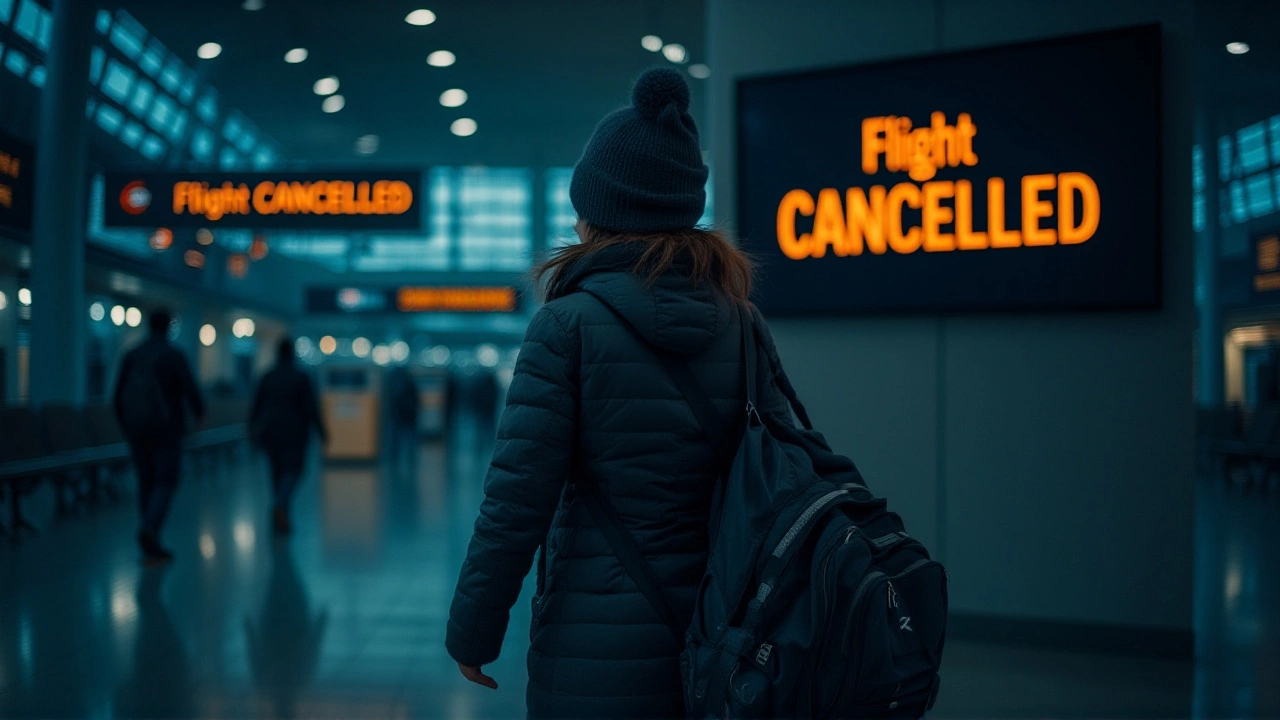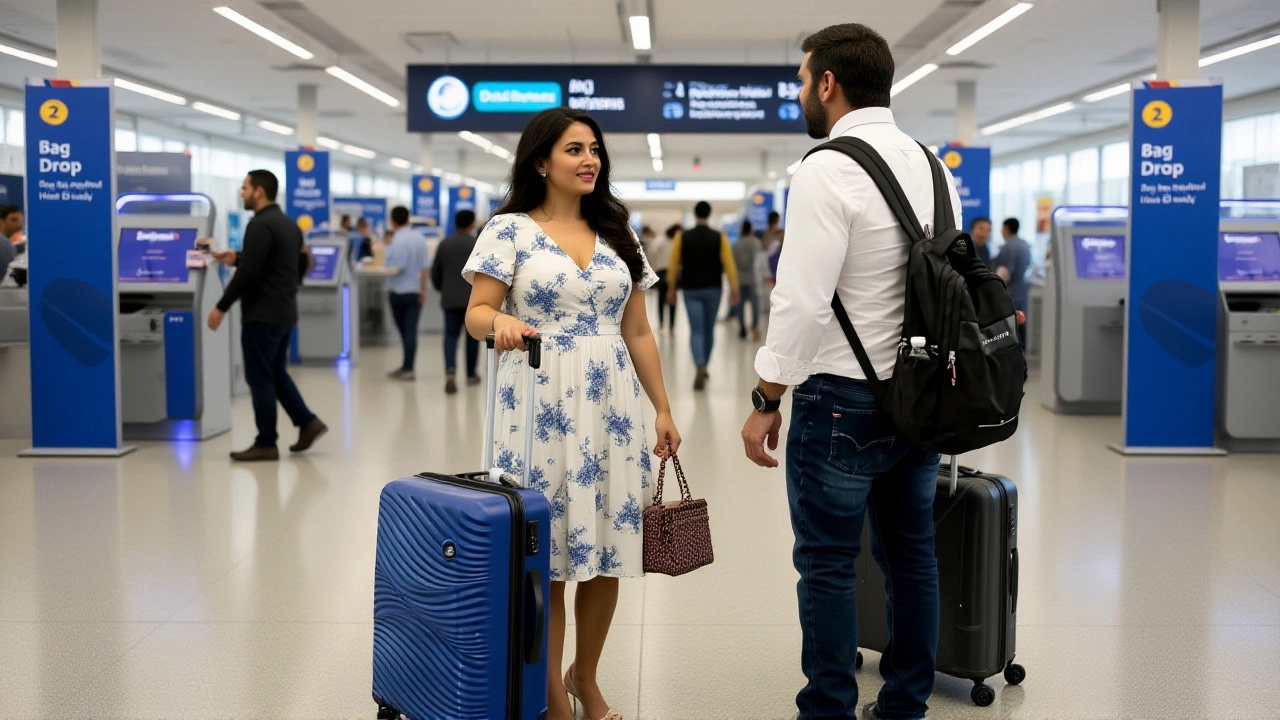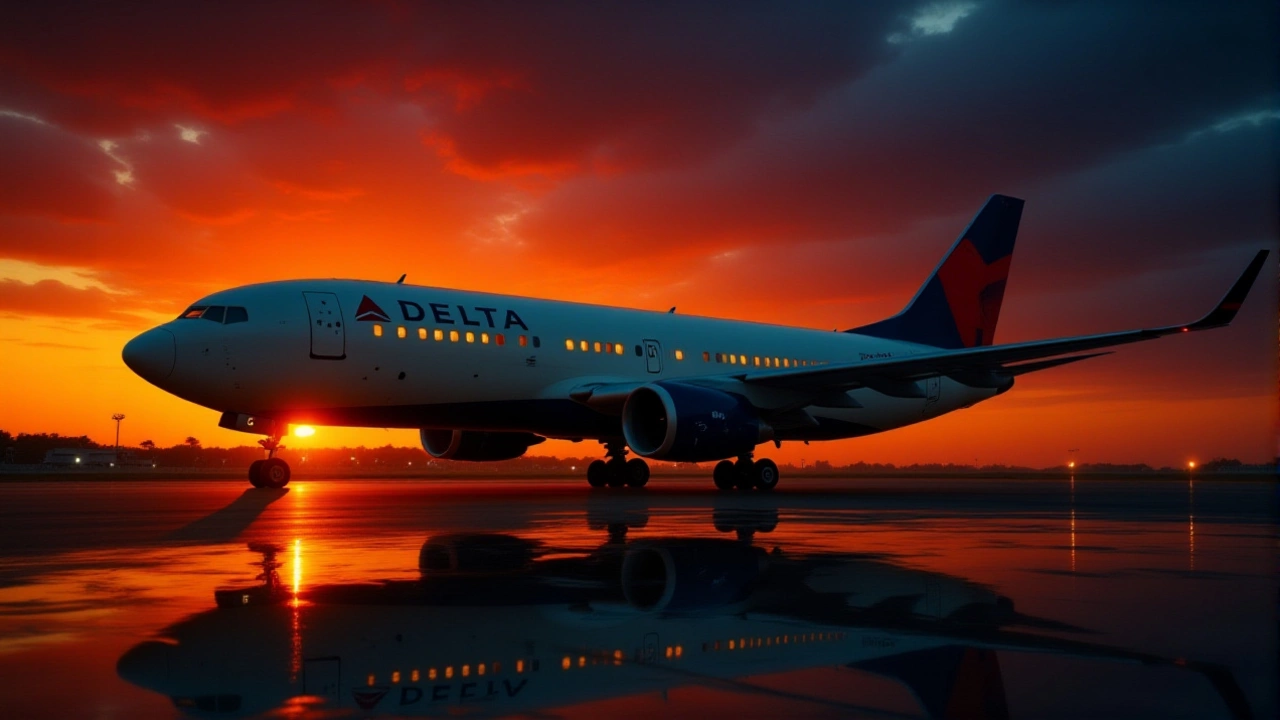When Ed Bastian, CEO of Delta Air Lines took to the runway‑level press conference on Sunday, October 19, 2025, he could hardly have imagined the digital avalanche about to hit the nation’s skies. A faint, smoky scent in the cabin of Delta Flight 898 forced the aircraft to turn back to Hartsfield‑Jackson Atlanta International Airport, and within hours an AWS outage in the US‑EAST‑1 region knocked the online lifelines of the continent’s biggest carriers.
What went wrong: The chain reaction
The day began with a routine transcontinental hop: an Airbus A321 departing ATL for Los Angeles International Airport. Passengers reported a strange, acrid smell, prompting pilots to abort the leg and circle back. While the aircraft landed safely, the incident set off a precautionary ripple across Delta’s network, prompting a flurry of unscheduled groundings.
At 02:34 ET, engineers at Amazon Web Services reported a severe degradation in the US‑EAST‑1 availability zone. The outage, traced to a cascading failure in a core storage subsystem, caused “significant signs of recovery” only after a six‑hour grind. For airlines, the hit was brutal: reservation portals, mobile check‑in, and flight‑plan distribution all rely on those same APIs.
By the time the sun rose on Monday, October 20, 2025, the Delta Air Lines website was serving static error pages, as was the app for United Airlines. Passengers in line at Atlanta, Chicago O’Hare, Dallas/Fort Worth, and even distant hubs like San Francisco International were left swiping futilely at screens, unable to confirm reservations or print boarding passes.
Scope of the disruption
- 7,352 flights delayed or canceled nationwide during the 24‑hour window.
- 113 outright cancellations, most of them on routes operated by Delta, United, and American.
- Southwest Airlines logged the highest count of delayed flights – 1,451 – despite not being directly hit by the AWS glitch.
- Atlanta’s ATL saw 335 delayed departures, ranking it third globally for that day’s disruptions.
- Key airports impacted included BNA, MSY, HSV, MEM, DFW, ORD, JFK, EWR, LAX, and SFO.
Data from Travel & Tour World shows the numbers spiked sharply after 03:00 ET, aligning with the AWS outage timeline. In contrast, Boston’s Logan Airport maintained a 71.47 % on‑time departure rate in the first three weeks of October, highlighting how localized the U.S. tech hit truly was.
Voices from the front line
"We’re seeing a backlog of reservation checks that is simply impossible to clear in real time," said Maria Gonzales, senior operations manager at United Airlines. "Our crews are flying blind on some legs, and that’s unprecedented for a carrier of our size."
Passengers echoed the frustration on Twitter. One user, @flyerjoe, posted a screenshot of an error message that read, “Our systems are experiencing unusual delays – please try again later.” Another, @lonewanderer, complained, “I’ve been in the ATL terminal for six hours, no boarding pass, no updates, just a line of angry people.”
Meanwhile, David Choi, chief technology officer at Amazon Web Services issued a statement at 10:46 AM ET on Monday: “We are seeing significant signs of recovery. Most requests should now be succeeding. We continue to work through a backlog of queued requests.”

Why this matters: Beyond the inconvenience
The financial hit from last summer’s CrowdStrike breach still haunts the industry. That July 2024 incident forced Delta to cancel over 5,000 flights, costing more than $500 million in lost revenue and compensation. Analysts at Morgan Stanley estimate that the current AWS outage could shave another $200 million off the combined quarterly earnings of the four major U.S. carriers.
Beyond bottom‑line dollars, the episode raises questions about aviation’s growing reliance on cloud services. While the Federal Aviation Administration (FAA) has long mandated redundant ground‑based navigation systems, airline reservation and crew‑management tools have migrated almost entirely to public‑cloud platforms.
“Regulators need to rethink the definition of ‘critical infrastructure’ to include these digital supply chains,” warned Dr. Lila Patel, professor of transportation security at University of Washington. “A single cloud‑zone failure can paralyze an entire industry.”
Responses and recovery steps
Delta rolled out three advisories on its website on October 20 (09:52 AM, 10:44 AM, and 10:46 AM ET). The notices referenced weather and airport advisories but stopped short of naming the AWS outage, likely to avoid sparking panic among travelers still trying to rebook.
United and American quickly shifted customers to phone‑based reservation centers, a move that strained call‑center capacity. Southwest, largely unaffected by the cloud glitch, offered complimentary meal vouchers at its kiosks in several airports to soothe stranded passengers.
On the regulatory side, the Department of Transportation (DOT) announced a review of airline contingency plans for cloud‑based disruptions. An internal memo, obtained by Men’s Journal, suggested the DOT may consider mandating “offline fallback procedures” for critical reservation functions.

Looking ahead: What’s next?
Industry insiders expect a gradual normalization over the next 48‑72 hours as the AWS engineering teams finish clearing the backlog. However, the broader impact may linger: delta’s planned service termination at Midland International Air & Space Port (MAF) on November 8 could be delayed if the airline’s financials take a further hit.
Meanwhile, the government shutdown that began in September adds another layer of uncertainty. Air traffic controllers are already operating with reduced staffing, and any additional delay could tip the balance toward more widespread cancellations in the coming weeks.
Historical perspective on tech‑induced aviation chaos
Historically, the industry has weathered everything from volcanic ash clouds to 9/11‑era security overhauls. Yet the digital age introduces a new kind of vulnerability. The 2015 cyber‑attack on a major European airline’s baggage‑handling system forced a 12‑hour shutdown and cost the carrier €23 million. The July 2024 CrowdStrike incident, mentioned earlier, still stands as the costliest single‑event loss in U.S. airline history.
Each episode underscores a clear pattern: as airlines lean deeper into cloud‑first strategies, the risk profile shifts from physical to virtual. The current AWS glitch is a reminder that even the most robust digital infrastructure can falter, and the fallout can ripple through millions of travelers.
Frequently Asked Questions
How does the AWS outage affect passengers trying to check in?
With the cloud services offline, airline websites and mobile apps could not process check‑in requests. Passengers were forced to stand in airport lines, use self‑service kiosks where available, or call airline call centers – often encountering long hold times and limited assistance.
Which airlines were hit hardest by the disruption?
Delta Air Lines, United Airlines, and American Airlines saw the highest number of delayed flights, each losing several hundred departures. Southwest Airlines logged the most delayed flights overall (1,451), though most of its issues stemmed from re‑routing passengers rather than a direct technical failure.
What financial impact could the outage have on the airlines?
Analysts estimate the immediate revenue loss could exceed $200 million across the four major carriers, on top of the $500 million Delta incurred from the 2024 CrowdStrike breach. Compensation payouts, hotel vouchers, and re‑booking costs add further strain to balance sheets already squeezed by high fuel prices.
Will the government shutdown affect the recovery?
The shutdown has reduced staffing at the FAA, which could delay runway clearances and add bottlenecks if additional weather or technical issues arise. Regulators are monitoring the situation, but no immediate policy changes have been announced.
What steps are airlines taking to prevent future cloud outages?
Carriers are reviewing their disaster‑recovery playbooks, adding more on‑premise fallback servers, and negotiating stricter service‑level agreements with cloud providers. The DOT’s upcoming review may also push airlines to adopt mandatory offline reservation capabilities for critical operations.
